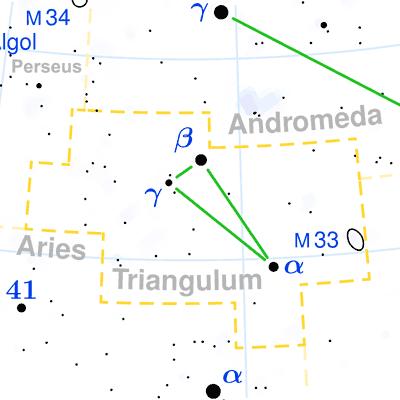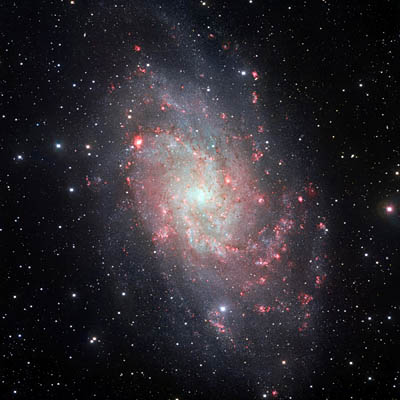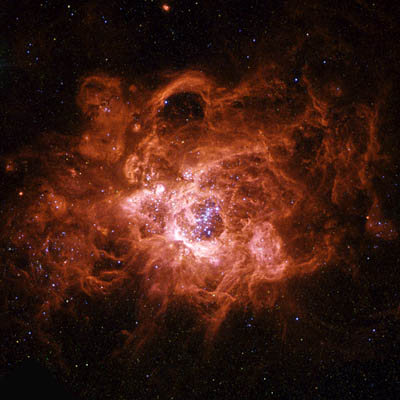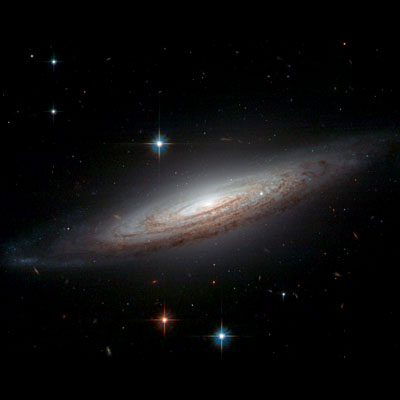Pronunciation:
(try-ANG-gu-lum)Abbreviation:
TriGenitive:
TrianguliRight Ascension:
2 hoursDeclination:
30 degreesArea in Square Degrees:
132Crosses Meridian:
9 PM, December 5Visible Between Latitudes:
90 and -50 degreesThe constellation Triangulum, the triangle, is completely visible at latitudes north of -53 degrees from March through May. It is a small constellation, occupying only 132 square degrees. This constellation ranks 78th in size among the 88 constellations in the night sky. It is bordered by Andromeda to the north and west, Pisces to the west and south, Aries to the south, and Perseus to the east.
Traingulum is one of the original 48 constellations first drawn by second century Greek astronomer Ptolemy. The name Triangulum is Latin for “triangle.” There is no mythology associated with this constellation. All of its historic names have been derived from its shape. In ancient times, its distinctive shape of three stars was called Deltoton because it resembled the Greek letter delta. To the ancient Egyptians, it represented the delta of the river Nile. The ancient Romans called it Sicilia because it reminded them of the island of Sicily.

points of interest below © Sea and Sky

© Torsten Bronger CC BY-SA 3.0
Beta Trianguli
Mothalla
Gamma Trianguli
Delta Trianguli
N/A
"Head of the Triangle"
N/A
N/A
Binary Star System
Binary Star System
Blue-White Subgiant Star
Binary Star System
3.00
3.42
4.01
4.87
Triangulum’s three brightest stars form the distinctive shape of an elongated triangle. Beta Trianguli is the brightest star. With a visual magnitude of 3.0, it is a binary star system located 127 light years from Earth. Mothalla is the second brightest star with a magnitude of 3.42. It is also a binary star system. At magnitude 4.01, Gamma Trianguli completes the triangle. This is a blue-white subgiant star located about 112 lights years distant.
Triangulum contains one Messier object called M33, also known also as the Traingulum Galaxy and the Pinwheel Galaxy. It is a nearly face-on spiral galaxy located about three million light years from Earth. It is one of the most famous galaxies in the sky and is the largest member of the local group of galaxies which includes the Andromeda Galaxy and our own Milky Way. There are many other faint objects in Triangulum, but they can only be seen with a large telescope. These include an emission nebula known as NGC 604 and a spiral galaxy called NGC 634.

© European Southern Observatory / CC BY 4.0

© Judy Schmidt / CC BY 2.0

© ESA/Hubble & NASA / CC BY 3.0



